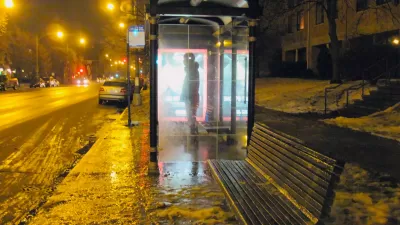Tanvi Misra discusses with William Frey of the Brooking Institution the repercussions of the demographic flip expected to occur by 2050.
According to Tanvi Misra of CityLab, by 2050 Brookings Institution demographer William Frey has found that "[t]he share of so-called 'new minorities'—Hispanics, Asians and multi-racial groups in America—is going to double. If your first guess is that this is all due to immigration, you're not entirely wrong—it's because of past immigration. What's really driving the growth now (and will continue to do so in the future) is that majority of the immigrants who are already here are at the baby-making age."
Frey discusses the spatial locations of these minority groups within metropolitan areas. When discussing suburban and urban migration, Frey believes, "More Asian metropolitan residents live in the suburbs than in the cities than two decades ago. Eventually, more Hispanics moved into the suburbs. Now, with the 2010 Census, there are more blacks moving to the suburbs... which is a real milestone in the U.S. given the strong city-concentration of blacks for many, many, many decades. This younger generation of African-Americans—professionals and graduates—are moving off to the suburbs just like younger people have... in other race groups."
Overall, Frey sees the implications of the demographic reshuffling as positive. The implications of these changes are seen in the proliferation of interracial marriages and the politics of places. However, these implications "move at different paces in different parts of the country—but it is a moving out and an integration—not only across regions, cities and suburbs, but at the neighborhood level."
FULL STORY: March of the Non-White Babies

Maui's Vacation Rental Debate Turns Ugly
Verbal attacks, misinformation campaigns and fistfights plague a high-stakes debate to convert thousands of vacation rentals into long-term housing.

Planetizen Federal Action Tracker
A weekly monitor of how Trump’s orders and actions are impacting planners and planning in America.

In Urban Planning, AI Prompting Could be the New Design Thinking
Creativity has long been key to great urban design. What if we see AI as our new creative partner?

King County Supportive Housing Program Offers Hope for Unhoused Residents
The county is taking a ‘Housing First’ approach that prioritizes getting people into housing, then offering wraparound supportive services.

Researchers Use AI to Get Clearer Picture of US Housing
Analysts are using artificial intelligence to supercharge their research by allowing them to comb through data faster. Though these AI tools can be error prone, they save time and housing researchers are optimistic about the future.

Making Shared Micromobility More Inclusive
Cities and shared mobility system operators can do more to include people with disabilities in planning and operations, per a new report.
Urban Design for Planners 1: Software Tools
This six-course series explores essential urban design concepts using open source software and equips planners with the tools they need to participate fully in the urban design process.
Planning for Universal Design
Learn the tools for implementing Universal Design in planning regulations.
planning NEXT
Appalachian Highlands Housing Partners
Mpact (founded as Rail~Volution)
City of Camden Redevelopment Agency
City of Astoria
City of Portland
City of Laramie





























